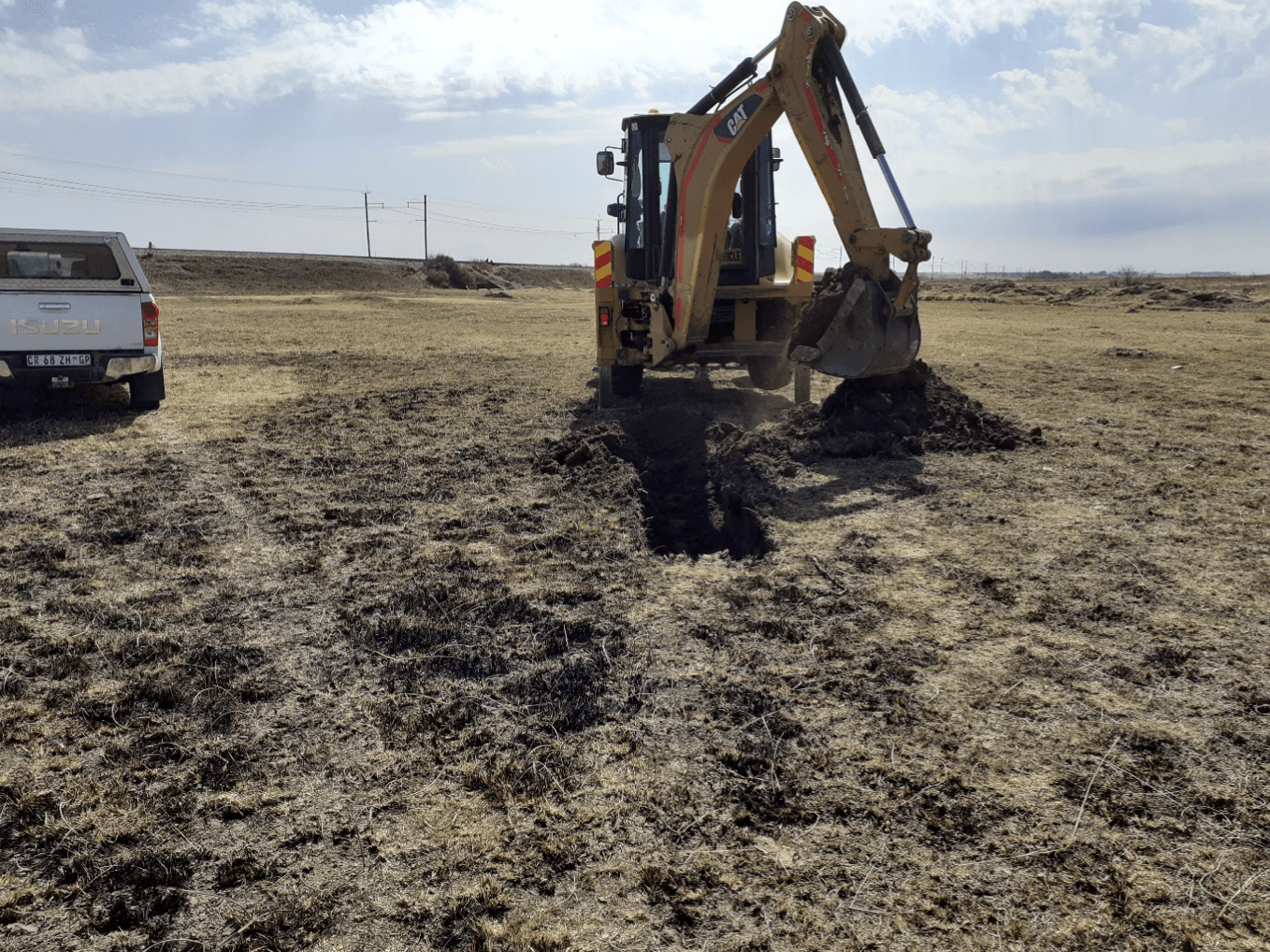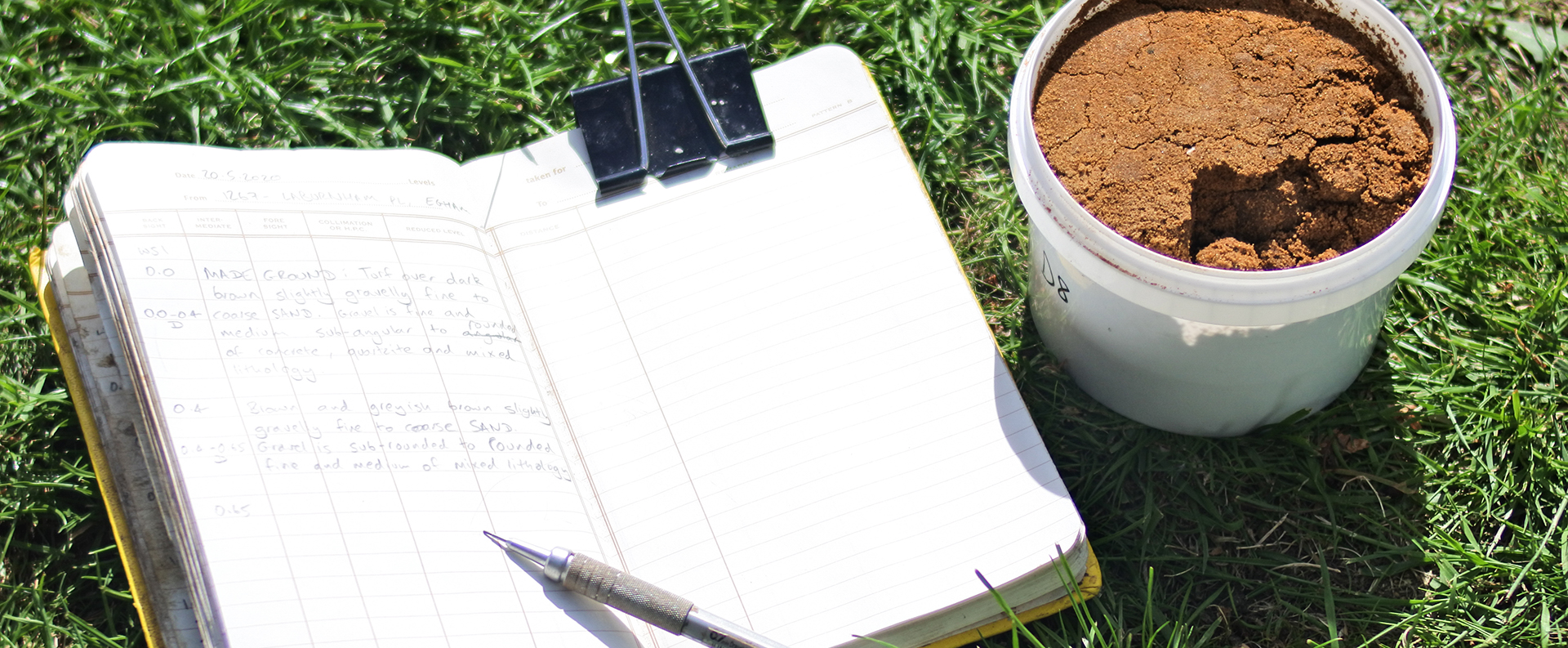Top Factors to Work With a Geotechnical Specialist for Your Construction Tasks
Top Factors to Work With a Geotechnical Specialist for Your Construction Tasks
Blog Article
The Relevance of Geotechnical Design in Attending To Ecological Difficulties and Enhancing Building And Construction Security
Geotechnical engineering serves as a keystone in the junction of environmental stewardship and building safety and security, offering important understandings into the habits of soil and rock under different problems. By carrying out calculated site investigations and tailored reduction actions, geotechnical engineers play a crucial role in guarding both human lives and environmental stability.

Role of Geotechnical Design
Geotechnical engineering plays a crucial function in the style and construction of facilities by resolving the habits of dirt and rock products under numerous problems. This area of engineering is crucial for understanding the interaction in between frameworks and the ground, which includes figuring out the load-bearing ability of dirt, examining stability, and anticipating prospective negotiation or failing.
Geotechnical engineers are in charge of carrying out site investigations, which entail tasting and testing dirt and rock to gather data on their physical and chemical buildings. This details is vital for developing structures, keeping walls, and other earth-retaining frameworks that make sure safety and security and durability. In addition, geotechnical design notifies the choice of proper building and construction approaches and products, consequently minimizing dangers related to soil actions.
Additionally, the combination of geotechnical design principles into metropolitan planning and ecological monitoring is vital for attending to challenges such as ground contamination and groundwater monitoring. By comprehending geotechnical aspects, designers can develop lasting options that improve the resilience of facilities against all-natural risks, while likewise advertising ecological stewardship. Ultimately, the function of geotechnical design is crucial for achieving risk-free, sturdy, and ecologically mindful building and construction methods.
Soil Erosion Reduction
Dirt erosion positions a significant hazard to both environmental stability and facilities integrity, influencing approximately 24 billion heaps of fertile soil lost yearly worldwide. This phenomenon is aggravated by factors such as logging, urbanization, and inadequate farming practices. Geotechnical engineering plays a pivotal function in establishing reliable dirt disintegration reduction methods that safeguard both the atmosphere and building and construction jobs.
One technique entails the application of disintegration control approaches such as vegetation growing, which stabilizes dirt via origin systems. In addition, the construction of keeping terraces and wall surfaces can effectively lower surface area overflow and safeguard at risk areas from disintegration. Appropriate water drainage layout is likewise vital; it lessens water build-up and guides excess drainage away from crucial structures.
Moreover, geotechnical engineers employ dirt stablizing strategies, such as the application of geotextiles and biodegradable mats, to improve dirt communication and protect against degradation - geotechnical specialist. Normal tracking and evaluation of erosion-prone sites make it possible for prompt interventions, making sure lasting sustainability. By integrating these approaches, geotechnical design not only alleviates the effects of dirt erosion yet likewise contributes to the strength of infrastructure versus environmental obstacles, ultimately fostering a more secure and extra sustainable constructed environment
Groundwater Defense Methods
Groundwater offers as a crucial source for drinking water, agriculture, and commercial procedures, making its protection vital for environmental sustainability and public wellness. Reliable groundwater defense techniques are crucial in reducing contamination dangers and guaranteeing the durability of this resource.

Normal monitoring of groundwater top quality is additionally necessary, allowing early discovery of contamination sources and promoting prompt remediation initiatives. Using innovative innovations, such as geophysical surveys and remote sensing, aids in identifying possible risks to groundwater gets.
Additionally, public education and learning and stakeholder interaction are important, promoting neighborhood assistance for groundwater security efforts. geotechnical specialist. By incorporating regulatory procedures, technological innovations, and neighborhood participation, we can produce a thorough framework that safeguards groundwater resources while promoting sustainable growth and construction methods
Landslide Risk Management
Landslides position substantial risks to both human security and facilities, making reliable risk management methods important. Geotechnical engineering plays an essential duty in identifying, analyzing, and mitigating landslide threats. A comprehensive understanding of incline security, dirt auto mechanics, and hydrology is vital for developing efficient danger management plans.
The initial action in landslide danger administration includes detailed website examinations, that include geological mapping and dirt screening. These investigations assist engineers review the potential for landslides by recognizing essential variables such as incline angles, soil structure, and water material. Utilizing sophisticated technologies such as remote sensing and geophysical studies can boost the accuracy of these evaluations.
Once risks are recognized, appropriate mitigation procedures can be applied. These may consist of engineering remedies such as keeping walls, water drainage systems, and incline stabilization techniques. Monitoring systems ought to be established to detect indications of ground activity and changes in water levels, enabling for aggressive interventions.

Enhancing Construction Safety And Security
Construction sites often offer a myriad of threats that can jeopardize worker safety and task stability. Geotechnical design plays a vital function in enhancing visite site building security by supplying essential understandings into subsurface conditions. Via extensive dirt and rock analysis, geotechnical designers can identify possible dangers, such as dirt instability, groundwater issues, and seismic vulnerabilities, which may endanger the safety of construction tasks.
Carrying out geotechnical remedies, such as appropriate foundation style and making use of preserving structures, minimizes these risks substantially. These remedies not only guarantee the stability of the frameworks being developed but also create a much safer working environment for construction employees. In addition, strenuous surveillance and assessment of website problems throughout the construction process are crucial. Making use of sophisticated modern technologies like ground-penetrating radar and inclinometer systems enables real-time information collection, permitting prompt treatments when risks are detected.
Additionally, fostering a culture of security with training and adherence to established safety and security procedures better enhances building website safety and security. By incorporating geotechnical experience right into the preparation and implementation stages, building jobs can achieve higher safety criteria, inevitably securing employees and ensuring effective job conclusion.
Conclusion
In final thought, geotechnical engineering serves as the original source a critical technique in advertising and taking on ecological difficulties construction security. With effective dirt erosion reduction, groundwater protection methods, and landslide risk management, geotechnical engineers add to the development of durable infrastructure.
Geotechnical design offers as a foundation in the intersection of environmental stewardship and construction safety, offering essential understandings into the actions of soil and rock under numerous conditions. Geotechnical engineering educates the selection of ideal building and construction methods and products, thus reducing risks linked with dirt habits.
Geotechnical engineering plays an essential function in establishing reliable dirt erosion mitigation methods that safeguard both the setting and building and construction tasks.
Additionally, geotechnical designers employ soil stablizing techniques, such as the application of geotextiles and biodegradable floor coverings, to improve soil cohesion and avoid degradation. With extensive dirt and rock evaluation, geotechnical designers can identify prospective threats, such as soil instability, groundwater problems, and seismic susceptabilities, which might compromise the safety of building and construction tasks.
Report this page